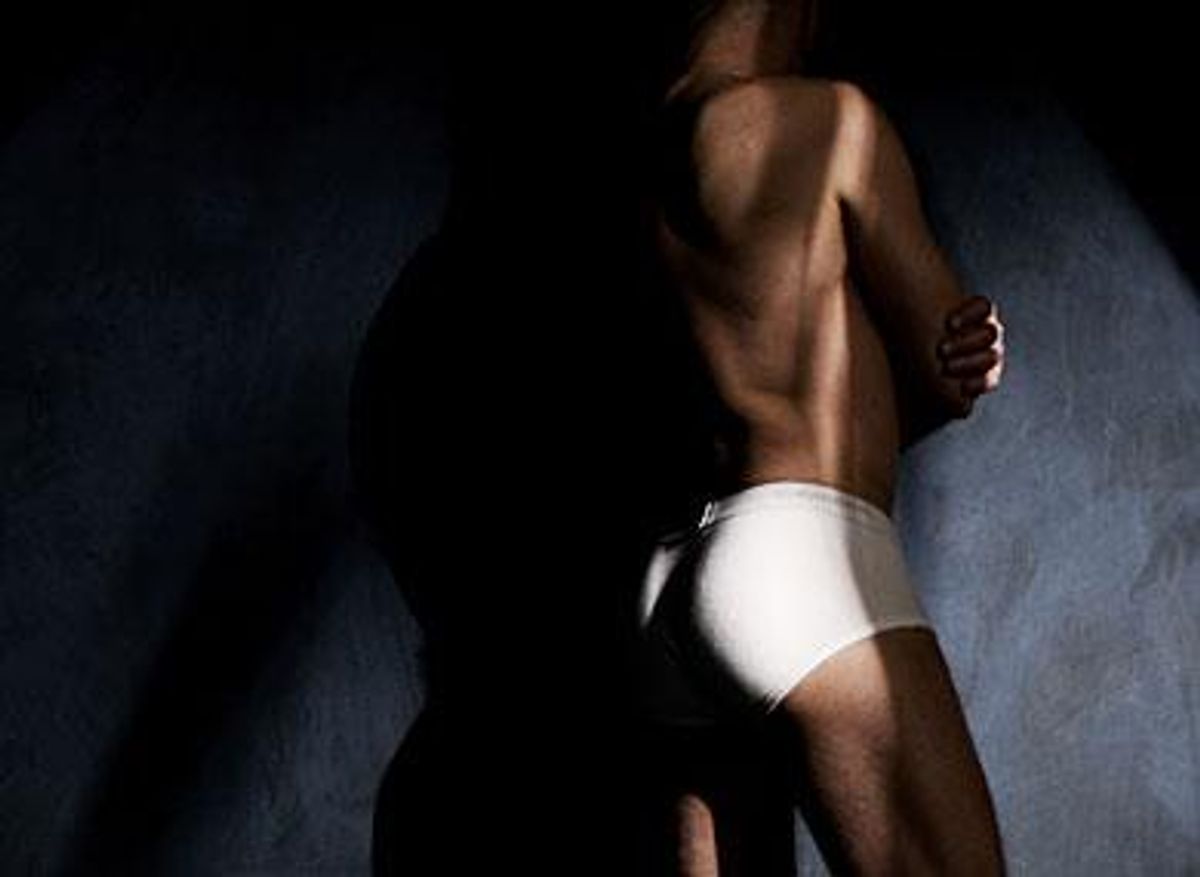
Thomas's hesitance to ask his subjects to pose nude led him to stumble upon what has become one of the signature motifs of his work: men in white briefs.
May 28 2011 4:00 AM EST
November 17 2015 5:28 AM EST
By continuing to use our site, you agree to our Private Policy and Terms of Use.

Thomas's hesitance to ask his subjects to pose nude led him to stumble upon what has become one of the signature motifs of his work: men in white briefs.
Charles Thomas Rogers, or Charlie, as he's known to his friends, is a photographer based in Brooklyn, N.Y. He grew up in Beacon, N.Y., received his B. in English at Cornell University, and began his career as a writer of both fiction and poetry. In the late '90s he was an early pioneer of the Web cam as an artistic medium, and he exhibited some of this work as part of the Angelus Novus project in Belgium. After moving to San Francisco in 2002, he became half of the music group BARTON, which charted a number of songs in Billboard. It was in San Francisco that he first turned seriously to photography. His early hesitance to ask his subjects to pose nude led him to stumble upon what has become one of the signature motifs of his work: men in white briefs. Charlie returned to New York City in 2009, where he established his professional photographic practice.
The Advocate: Why are you a photographer?
Charles Thomas Rogers: I don't know that I have a choice. I started out as a writer, but my writing tended to lack any description of the way people or places look. I always wanted to tell stories visually, and so I started flirting with photography as a teenager and drawing a bit later, but because I had my head so wrapped around the idea that I should be a writer, it took me a long time to start taking photography seriously. I've really been doing it all along but only defining myself by it in the past few years.
What catches your eye?
I am endlessly fascinated by the interplay between light and shadow. I like things that are not quite right, and I like to play with the inappropriate.
Tell us about your process or techniques.
It really depends on who I am shooting. I don't go into a shoot with a lot of high-concept or preconceived notions. For me it's about letting the model express himself. Some people show up with a lot of props and want to play a lot of characters. Some people want to create shapes with their bodies. Some people don't know how they want to express themselves and stand still, waiting for direction, perhaps surprised at how little I give.
How do you choose your subjects?
I like the idea that my subjects could choose me. I think everyone has a beauty to them, unique, and a story to tell.
How do you describe your work?
I try not to, whenever possible. I want to let it speak for itself. I think using words to define a picture is like using pictures to define words. They're different languages, the visual and the verbal, and to cross between them is to lose a lot in the translation.
What makes a good photograph to you?
A good photograph tells a story, and a great photograph tells a lot of them.
What artists do you take inspiration from and why?
Often when I'd be out with my camera, I'd think of the Patti Smith line "I trust my guitar." I had to learn to trust my camera, to see what my camera sees. Photography, like music, requires a relationship with an instrument, a symbiosis, and that's something I had to learn. So I'd say Patti Smith influenced me, not just as a writer or a person but even as a photographer. As for other photographers, I think Stanley Stellar is fantastic, a legend. I was fortunate enough to meet him when I was younger, and he was very encouraging of my work. We talked a lot about his work as well, and so of course I was influenced by that, what I would call his quest for truth. But most of the photographers who inspire me are contemporaries of mine: Richard Oszust, Kevin McDermott, Isauro Cairo. They've all regularly taken pictures that I wish I could've taken.
Want more breaking equality news & trending entertainment stories?
Check out our NEW 24/7 streaming service: the Advocate Channel!
Download the Advocate Channel App for your mobile phone and your favorite streaming device!
